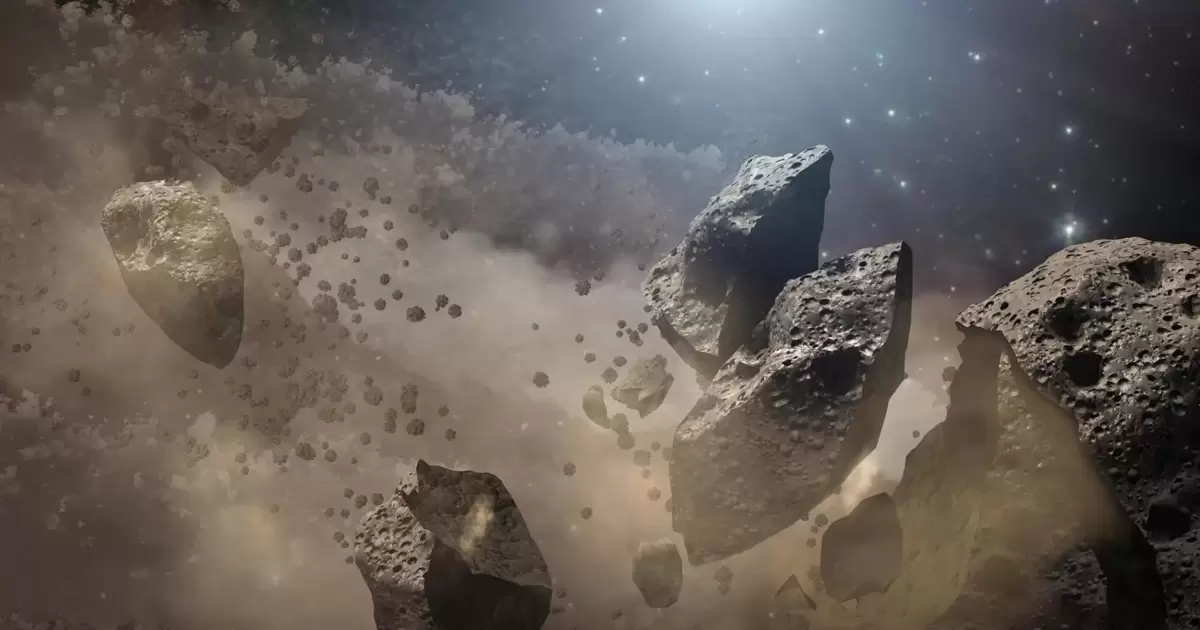According to researchers at the Swiss Federal Institute of Technology in Zurich (ETH) and the University of Cambridge, before life existed on Earth, chemistry was needed to form organic molecules from the chemical elements nitrogen, sulfur, carbon and phosphorus. “For chemical reactions to begin and continue, these elements were needed in abundance – and a constant supply. However, these elements were and still are in short supply on Earth itself.
However, in the first 500 million years of Earth's history, prebiotic chemistry evolved that produced organic molecules such as RNA, DNA, fatty acids or proteins on which all life is based. ETH researcher Craig Walton is convinced that enough sulfur, phosphorus, nitrogen and carbon reach Earth primarily through cosmic dust. This dust originates in space; For example, when asteroids collide with each other. To date, about 30,000 tons of dust have fallen to Earth from space. In the early days of the Earth's formation, dust rain was much greater, amounting to millions of tons per year.
The argument against this is that dust falls widely and is present locally in small amounts. “When you include transfers, things look different,” Walton says. Winds, rain, or rivers would collect cosmic dust over a large area and deposit it in a concentrated manner in specific places.
On the early Earth, there were places that contained a very large amount of cosmic dust
To find out whether cosmic dust could be a possible beginning and source of prebiotic chemistry, Walton worked with colleagues at the University of Cambridge (UK), who specialize in planetary simulations. and asteroid systems, a model has been developed. They used this to simulate how much cosmic dust would have fallen in the first 500 million years of Earth's history and where it might accumulate.
“Simulations show that there may have been places on the early Earth that had very high concentrations of cosmic dust. Supplies were constantly coming from space,” Walton says. “However, the dust rain declined quickly and sharply after the Earth formed.”
According to ETH Zurich, most scientists assume that the Earth was covered in a magma ocean for millions of years, which would have prevented the transport and deposition of cosmic dust. “However, recent research has found evidence that the Earth's surface cooled and solidified very quickly and large ice sheets formed,” says Craig Walton. According to simulations, this could be the best environment for cosmic dust accumulation. Not only sediments but also dust grains from space have been deposited in cryoconite holes – melting holes on the surface of the glacier.
Elements evolved from dust particles. Once its concentration in the icy water reached a critical threshold, chemical reactions began on their own, “leading to the formation of the organic molecules at the origin of life.”
Chemical processes can begin even at icy temperatures such as in melt holes. “Cold does not harm organic chemistry, on the contrary. Reactions are more selective and specific at low temperatures than at high temperatures,” explains Walton. “Researchers have shown in the laboratory that simple, circular ribonucleic acids (RNA) form spontaneously at such The primordial soup of water melts at temperatures near the freezing point and repeats itself.
Meteorites are unlikely to supply essential elements
The theory represented by the Nomis Fellow is not without controversy in science. As early as the 18th and 19th centuries, scientists were convinced that meteorites brought the elements of life to Earth. Even then, researchers found these elements in large quantities in rocks from space, but not in rocks from Earth.
“The idea of a meteorite sounds interesting, but there is a problem,” explains the Zurich geologist. A single meteorite supplies these materials only to a limited extent; Where it occurs is random and no further supplies are guaranteed. “I think it is unlikely that the origin of life depended on a few widely and randomly scattered pieces of rock. I think enriched cosmic dust is a plausible source,” says Walton.
In the next step, he wanted to test his theory experimentally. In the laboratory, he will recreate conditions that may have existed in primordial melting holes four billion years ago.

“Total coffee aficionado. Travel buff. Music ninja. Bacon nerd. Beeraholic.”








More Stories
Coral Seeding: Artificial Insemination Makes Coral More Heat Tolerant
Fear, Anger, and Denial: How People Respond to Climate Change – Research
LKH Graz: Using radiation to combat heart arrhythmias